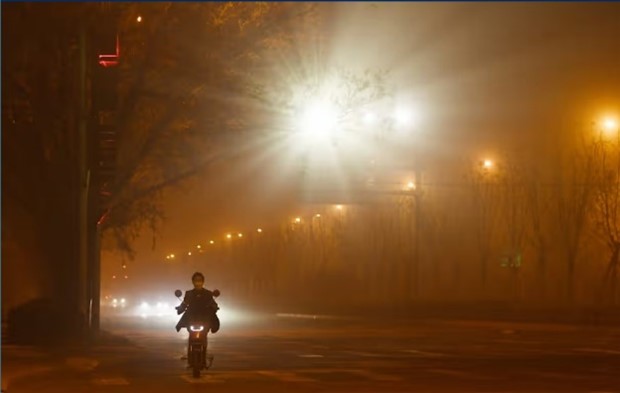
Could Climate Stripes Transform Our Perception of Air Pollution?
A novel approach to visualizing air quality data dating back to 1850 may compel governments to take decisive action, according to scientists.
A team of researchers has developed a new method to depict the disparities in air pollution experienced around the world. The findings reveal significant inequalities in air quality, with conditions worsening in many regions. However, the project also conveys a hopeful message: targeted government interventions can lead to cleaner air.
Inspired by Ed Hawkins' climate stripes, the new "air quality stripes" illustrate pollution levels from 1850 to the present. Each year is represented by a vertical bar, colored based on the level of particulate matter pollution. Air that meets the World Health Organization's standards is shown in sky blue, while various shades of yellow, brown, and black indicate higher pollution levels. The color scheme was chosen after analyzing over 200 images of smog from different parts of the globe.
Dr. Kirsty Pringle from the University of Edinburgh, who co-led the project, explained, "Air pollution is often dubbed the 'invisible killer,' but these visuals make the unseen seen, highlighting the changes across decades."
The project's website allows users to create personalized air pollution stripes for major cities.
Dr. Jim McQuaid of the University of Leeds, another co-director of the project, noted, "For me, it's all about that moment of clarity when someone finally gets it; that sudden realization of 'Oh, now I understand.'"
The air quality stripes for cities like London and Beijing demonstrate the significant improvements that can occur when action is taken. For more than a century, London was plagued by coal-induced smogs so dense they were likened to pea soup. A reluctant government was eventually forced to respond after a week-long smog in 1952 resulted in 12,000 deaths. The subsequent Clean Air Acts led to the replacement of coal with heating oil and later fossil gas.
Beijing's deteriorating air quality largely went unnoticed until the global spotlight was cast on the city during the 2008 Olympics. By then, air pollution in China was responsible for over 2 million deaths annually. However, recent efforts to clean up industry and traffic have produced swift and encouraging results.
In contrast, cities like Jakarta and Islamabad reflect the trends seen in many developing nations, where rapid urbanization and industrial growth occur without adequate air pollution controls.
The data for these stripes were derived from the UK Met Office's global climate models, adjusted with satellite observations available since 1998. This adjustment was also applied to past pollution levels, retroactively projected to 1850 using historical fuel and energy data.
On their website, the project team notes, "Few historical records of PM2.5 exist prior to 2000, so we rely on a combination of computer model simulations and satellite data. For the most recent years (2000-2021), we use a dataset that combines ground-level and satellite observations of PM2.5 concentrations."
They added, "Global pollutant concentration modeling is a complex challenge, and models are constantly being refined. Previous research has shown that CMIP6 multi-model simulations tend to underestimate PM2.5 concentrations compared to global observations."
The team's methodology includes a bias correction process to align the model with satellite data, ensuring a smooth time series.
While the air quality stripes can't show detailed pollution variations within each city, they effectively illustrate overall trends. Despite improvements in Europe, over 99% of the global population still breathes air that fails to meet WHO guidelines. Even with progress, particulate pollution is responsible for more than 400,000 premature deaths annually in Europe, and between 29,000 and 43,000 in the UK alone.
Prof. Ed Hawkins, the creator of the climate stripes, commented, "The climate stripes have been featured on the white cliffs of Dover, on sports uniforms, race cars, at music festivals, and even London Fashion Week. By making abstract data tangible, we can all contribute to solving some of the world's biggest challenges. Many major cities still struggle with dirty air, but improvements in other areas demonstrate that these critical global issues can be addressed with sufficient political will."